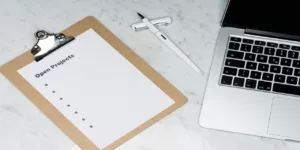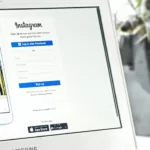Graphic design jobs are excellent for creatives looking to start freelancing. Whether you’re already an amateur designer or you’re considering making a career change, graphic designing can be very lucrative the more experienced you are. As when you work to hone your craft, it’s important to know what mistakes to avoid to ensure you do the best work possible. Read on to discover some of the worst mistakes many new graphic designers make.
1. Ignoring Your Client’s Instructions
As a graphic designer, the biggest mistake you can make is failing to understand your client’s needs. This may seem obvious in a job where a client provides explicit instructions, but understanding what it is your client expects goes beyond reading their list of instructions. If you fail to understand what your client wants, you may find yourself facing several revisions requests or even losing the work.
Avoid the negative situation of not meeting your clients’ needs by making it a point to properly communicate. If you feel as though your client isn’t clear with their instructions, it’s your responsibility to ask additional questions to gain a better understanding.
2. Not Thinking Outside the Box
While it’s important to work within the confines of your client’s expectations, don’t make the mistake of only following their instructions without putting a creative twist on things. It’s easy enough to create a design without any artistic flair, but a lackluster look isn’t what most clients expect. Make sure you go the extra mile and add your unique touch to every design. For example, if a small business owner in Hoboken is looking for a graphic designer to create their next logo, they’re expecting their designer to go above and beyond, so make sure to do just that.
3. Using Too Many Fonts
Another way to avoid going overboard when designing for a client is to watch how many fonts you use. When it comes to choosing a font, it’s best to stay as simple as possible. Experts like Jeff English NYC recommend using one or two fonts in a single design. This way, it’s easy for your client to read through while still giving you the creative license to make the typography look interesting.
Another font-related tip to remember is to consider the size of your design. For smaller projects like business cards, it’s better to stick to a single font to promote a sense of continuity.
4. Forgetting to Kerning Your Fonts
When working with fonts, make sure to remember proper kerning. Kerning refers to the process of adjusting the space between the letters. Good design relies heavily on creating a proper sense of balance, in addition to making sure that all words are legible. Give special attention to kerning your font when working with text to keep your projects as aesthetically pleasing as possible.
5. Overthinking and Over-Designing
While there is no one-size-fits-all model for excellent graphic design, there is one rule that always remains true: don’t overthink or over-design. Many graphic designers make the mistake of trying to show off every aspect of their expertise in their client work, leading to a cluttered and unattractive final design.
According to Jeff English NYC, the best designs are those that leave the viewer with some breathing room. Having an ample amount of negative space makes the design easy on the eyes and more enjoyable overall.
6. Promising More Than You Deliver
To get new clients as a graphic designer, it’s important to sell yourself properly. While you should promote your experience and education when attracting new clients, it’s equally as important that you avoid promising more than you can deliver. One of the biggest mistakes graphic designers make when overpromising is with the deadline. Even if you think a job is “quick” or “easy”, the reality is that you should always give yourself more time than you think you need so you don’t leave your client with unmet expectations.
Graphic design experts share that it’s always best to finish something unexpectedly early than to fail to meet a deadline. This way, your clients will always be pleasantly surprised when their project has a faster turnaround time than advertised.
7. Using Stock Images
Stock images have their place in some situations, but shouldn’t be your one-stop-shop for every graphic design project. Though stock images make it easy to find high-quality photos for your next project, using images that are obviously from a stock website can make your project look unprofessional and cheap. Always follow best practices when working with stock images to find photos that are dynamic, unique, and fit in with your overall concept.
Can’t seem to find the image you want? Consider hiring a photographer to get the shot or trying to capture it on your own. Using an original photo is a great way to make sure you will deliver an image that your client has never seen before.
8. Checking for Mistakes
If you’re working on a deadline, it can be tempting to try to rush through a project to get it done as soon as possible. However, speeding through the design process can have serious consequences. Even if you’re on a time crunch, make sure to carefully review your design work for any mistakes. Oftentimes, taking a second look is all you need to fix any glaring issues.
Common problems that graphic designers in Hoboken face include typos in the text. Be sure to read through all written content in your design to avoid sending the project to your client prematurely. This way, you’ll be able to skip having your client ask for a revision.
Working with clients as a graphic designer is a two-way street that requires ample communication and good business practices on your part. Make sure your graphic design clients are happy with the final product by avoiding the most common graphic design mistakes. Keep this guide in mind as you take on new graphic design clients.
Written by:
Scott Weathers








